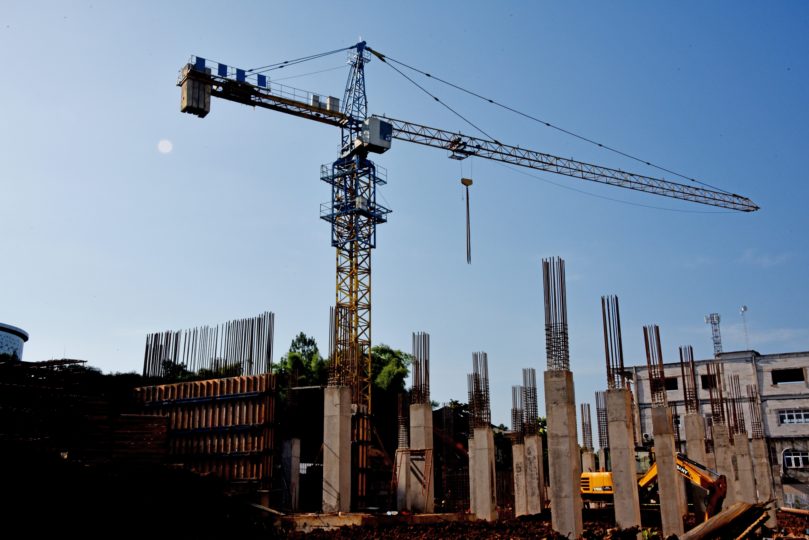
The official launch of the new Planning and Environment division of the High Court formally took place on the 11th of December 2023, allowing for more efficient case management and throughput of cases.
Eimear Dooley BL breaks down the practical implications of this new list and accompanying practice direction.
What is the Aim of the New Approach of The Planning and Environment Court Division?
The new approach seeks to facilitate specialisation in a complex and technical area of law. In particular, it will allow judicial expertise to develop in such a way that will result in faster and more robust decision making. Given that this is an area heavily impacted by European Union law, a more cohesive and centralised approach will allow international, as well as Irish developments, to be tracked efficiently. The resulting capacity of the court to engage with litigation that can often involve intricate technical issues, and can therefore be informed by a specialised expertise, as well as the procedural safeguards that have been put in place to ensure an efficient approach. The purpose and goals of the List are set out in Part I(3) of Practice Direction HC 124 (at paragraphs 10 to 12).
What is the Scope of the New Approach List?
Comparatively to its predecessor, the new approach envisages a wider scope for the cases that can come into the List.
The following categories of cases can be entered administratively into the List without need for an application to the court.
- If the pleadings are correctly titled; proceedings relating to certain EU legislation, or amending/replacing legislation, including proceedings challenging the adequacy of Ireland’s implementation of same and proceedings relating to certain Irish legislation, or amending/replacing legislation, including challenges to the validity of this legislation, or the adequacy with which it transposes EU law.
- The legislation in question is listed at paragraph 2(a) of Part I(1) of Practice Direction HC 124.
- Satellite litigation, defined at paragraph 6 of Part I(2) of the Practice Direction HC 124, will also be admitted automatically, as well as the determination as to whether the proceedings in question are satellite litigation.
- There are also proceedings that can be admitted in accordance with an order of the court, following an assessment on the subject matter of the dispute only. These are any cases that are not covered by the automatic provisions that is, in the opinion of the court, of a planning or environmental nature or has planning or environmental aspects. This includes any dispute that regards an element of a project that is linked to or consequential on a decision to which proceedings already in the list relate; paragraph 2(b) of Part I(1) of Practice Direction HC 124
This broadening of the scope of the List will likely mean that cases from the Non-Jury and Judicial Review list that did not previously fall within the scope of the Commercial List will now be heard in the Planning and Environment List.
What are the Key Implications of the New Approach?
The new approach is notably highly prescriptive in terms of procedure, for example; the institution of proceedings, subsequent case management processes and in terms of the formatting and structure of pleadings and written legal submissions. This can, for example, be seen in Part II(10) to (23) of Practice Direction HC 124. Paragraphs 90 and 91 at Part II(19) of the Practice Direction effectively sets out the practice and procedure for dealing with the issue of the application of costs protection to proceedings, which was an issue that had resulted in some delay in the progression of a number of planning and environmental cases prior to the clarificatory judgment of the Supreme Court in Heather Hill Management Company CLG & Anor v. An Bord Pleanála and others [2022] IESC 43, [2022] 2 I.L.R.M. 313.
The prescriptive nature of the Practice Direction is accompanied by helpful checklists to ensure organisation of paperwork, which introduces an additional administrative process for practitioners running cases in the List, however it will likely facilitate better organisation and more efficient case management overall.
A notable change, seen in paragraphs 97 to 99 of Part II(21) of the Practice Direction, is the introduction of a requirement for the parties in a case to prepare a statement of case document, similar to the statement of case procedure availed of in the Supreme Court. It is conceivable that in practice the content of these documents might prove difficult for opposing parties to agree on, however this scenario is expressly envisaged and provided for in the Practice Direction itself insofar as it states that were not agreed, the alternative positions on a given point should be contained in the statement.
Certain changes have also been introduced in relation to the fixing of hearing dates within the List. Firstly, it is notable that the List to Fix Dates (LFD) will be held two terms before the start of the term for which dates are being fixed. This is a welcome development for all practitioners in the List as it allows them to arrange their diaries in advance, minimising the risk of scheduling conflicts. Further, it is of the note that the Practice Direction envisages hearing dates in September 2024, and that the normal Monday List will take place throughout September 2024, commencing on the Monday 2nd September 2024. As referred to above, in terms of legal drafting, the new Practice Direction is also helpfully prescriptive in terms of formatting and content.
Of particular use to practitioners is Schedule 3, which clearly sets out what is to be contained in a Statement of Grounds as to its formatting and how reliefs should be pleaded or framed for particular matters.
This is of benefit to all practitioners, but in particular to younger practitioners who have an interest in engaging with a very technical area of law and who are learning how to deal with, and correctly frame, the various and complicated reliefs such as the adequate transposition of EU law that can arise in a given case.

Going Forward
The wide range of matters that come within the ambit of the List and the high volume of litigation of a planning and environmental nature is likely to require that further judges be assigned to the List in early course, and likewise that further resources be allocated by way of judicial assistants, Court Registrars, etc.
The prescriptive nature of the Practice Direction will be of assistance in particular to newer practitioners in the area, as they seek to develop their practice. It brings clarity to what the requirements of the List are and prescribes helpful step by step guidance as to how proceedings in the List should be conducted.
Overall, the approach and procedure embodied in Practice Direction HC124 brings with it detailed, organised and prescriptive guidance which strengthens aim of specialising and streamlining a complex area of law. It makes it clear how the aims of the List, to facilitate efficient but robust decision making, can be fulfilled through the specified approach. It is also a welcome and thorough piece of guidance for any practitioners new to the area.
The views expressed above are the author’s own and do not reflect the views of The Bar of Ireland.